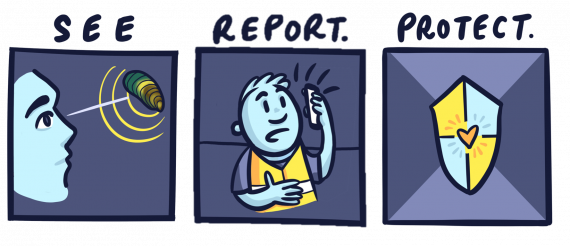How does POMS affect oysters?
Pacific Oysters affected by POMS experience rapid and mass mortality. Mortality of up to 100% can be experienced in cultivated oysters within days of infection. The highest mortalities (between 60%-100%) occur in juvenile oysters (3-6 months in age), however all life stages have been recorded as susceptible.
Where does POMS occur?
The first reported POMS mortality outbreak was in France in 2008. Since then, POMS has been detected in the United Kingdom, Ireland, the Netherlands, Spain, Italy, Asia, New Zealand and Australia.
POMS was first confirmed in Australia in NSW in November 2010. In January 2016, oyster mortalities confirmed to be caused by POMS occurred in Tasmania. In February 2018, POMS was confirmed in the Port River of South Australia.
In NSW, POMS has been confirmed in three Pacific Oyster producing estuary systems, Botany Bay/Georges River, Hawkesbury River and Brisbane Water. POMS has also been confirmed in wild Pacific Oysters in Sydney Harbour/Paramatta River, where oyster farming does not occur. It is not known how POMS first arrived in NSW.
| Estuary | OSHV1 first detected |
|---|---|
| Botany Bay/Georges River | November 2010 |
| Sydney Harbour/Paramatta River | January 2011 |
| Hawkesbury River (including Patonga Creek) | January 2013 |
| Brisbane Water | February 2013 |
Immediate reporting of these mortalities resulted in rapid action by NSW DPIRD to investigate the cause and implement controls on the movement of oysters and oyster cultivation equipment from these areas to help prevent further spread of the disease.
What drives disease outbreaks?
POMS is a seasonal disease where clinical infection and mortality is most prevalent during the summer months. Once POMS is introduced to an estuary system impacts generally persist on an annual basis. In NSW, mortality occurs once water temperatures reach and sustain a minimum 21°C, although in Europe, a lower threshold temperature of 16°C has been reported. Studies in Europe found that POMS was detectable in oysters after mortalities ceased, which indicates that surviving oysters can act as carriers of the disease. At this stage, there is still a lot to be learned about the POMS lifecycle.
NSW DPIRD can investigate the mortality event. If required, NSW DPIRD can coordinate the submission of samples to the State Veterinary Diagnostic Laboratory at NSW DPIRD Elizabeth Macarthur Agricultural Institute to exclude or confirm disease.
What you can do to help
We encourage anybody that observes suspected aquatic disease events to report them so they can be investigated. Fish Care Volunteers, recreational fishers and community groups can assist by reporting any observed mortality outbreaks in wild Pacific Oyster populations.
Cleaning boats, trailers, kayaks fishing gear and other equipment before moving to another waterway can greatly help reduce the spread of aquatic diseases and pests. Read how via this aquatic hygiene factsheet and Make 'clean' part of your routine.
The oyster aquaculture industry has an important role to play in managing POMS in NSW estuaries. Movement controls are currently in place to manage biosecurity risks posed by shipping cultivated oysters and cultivation equipment between NSW estuaries. See Biosecurity Requirements to read more and ensure you understand your obligations as a NSW aquaculture permit holder.
Resources and further reading
General information:
- Make 'clean' part of your routine
- Oyster Health Sydney was a project from the Aquatic Animal Health team in the University of Sydney’s Faculty of Veterinary Science which in conducted research in relation to POMS virus in NSW in 2011-2013.
Information for the Aquaculture Industry
- Pacific Oyster Mortality Syndrome Equipment Movement Protocol - Under POMS movement controls, oyster cultivation equipment and infrastructure can only be moved from POMS affected estuaries to an unaffected estuary in accordance with this approved protocol.
Information for restaurants:
Published research
- Petton B, Destoumieux-Garzon D, Pernet F, Toulza E, de Lorgeril J, Degremount L, Mitta G (2021) The Pacific Oyster Mortality Syndrome, a polymicrobial and multifactorial disease: state of knowledge and future directions. Frontiers in Immunology 12:630343
- King WL, Siboni N, Williams NLR, Kahlke T, Nguyen KV, Jenkins C, Dove M, O’Connor W, Seymour JR, Labbate M (2019) Variability in the composition of Pacific Oyster microbes across oyster families exhibiting different levels of susceptibility to OsHV-1 µvar disease. Frontiers in Miccrobiology 10:473
- Whittington RJ, Liu O, Hick PM, Dhand N, Rubio A (2019) Long-term temporal and spatial patterns of Ostreid herpesvirus 1 (OsHV-1) infection and mortality in sentinel Pacific oyster spat (Crassostrea gigas) inform farm management. Aquaculture 513:734395
- de Kantzow M, Hick P, Becker JA, Whittington RJ (2016) Effect of water temperature on mortality of Pacific Oysters Crassostrea gigas associated with microvariant ostreid herpesvirus 1 (OsHV-1 µVar). Aquaculture Environment Interactions 8:419-428
- Hick P, Evans O, Looi R, English C, Whittington RJ (2016) Stability of Ostreid herpesvirus-1 (OsHV-1) and assessment of disinfection of seawater and oyster tissues using a bioassay. Aquaculture 450:412-421
- Paul-Pont I, Evans O, Dhand NK, Rubio A, Coad P, Whittington RJ (2014) Descriptive epidemiology of mass mortality due to Ostreid herpesvirus-1 (OsHV-1) in commercially farmed Pacific oysters (Crassostrea gigas) in the Hawkesbury River estuary, Australia. Aquaculture 422-423:146-159
- Jenkins C, Hick P, Gabor M, Spiers Z, Fell S, Gu X, Read A, Go J, Dove M, O’Connor W, Kirkland P, Frances J (2013) Identification and characterisation of an ostreid herpesvirus-1 microvariant (OsHV-1 µ-var) in Crassostrea gigas (Pacific oysters) in Australia. Diseases of Aquatic Organisms 105: 109-126
